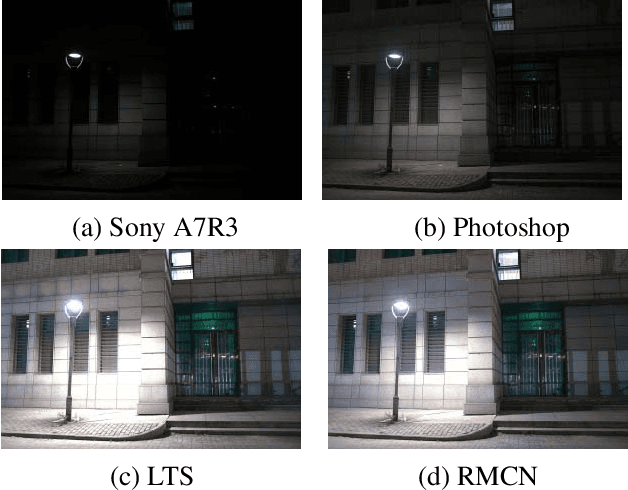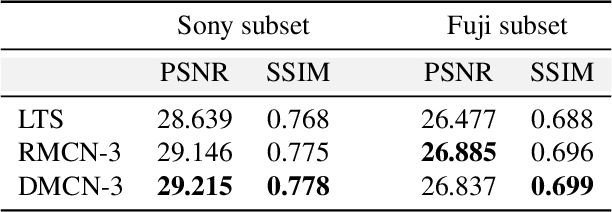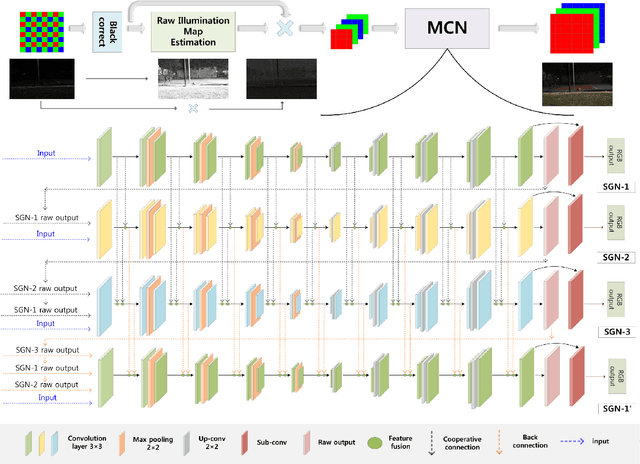Extreme Low-Light Imaging with Multi-granulation Cooperative Networks
Paper and Code
May 16, 2020



Low-light imaging is challenging since images may appear to be dark and noised due to low signal-to-noise ratio, complex image content, and the variety in shooting scenes in extreme low-light condition. Many methods have been proposed to enhance the imaging quality under extreme low-light conditions, but it remains difficult to obtain satisfactory results, especially when they attempt to retain high dynamic range (HDR). In this paper, we propose a novel method of multi-granulation cooperative networks (MCN) with bidirectional information flow to enhance extreme low-light images, and design an illumination map estimation function (IMEF) to preserve high dynamic range (HDR). To facilitate this research, we also contribute to create a new benchmark dataset of real-world Dark High Dynamic Range (DHDR) images to evaluate the performance of high dynamic preservation in low light environment. Experimental results show that the proposed method outperforms the state-of-the-art approaches in terms of both visual effects and quantitative analysis.
 Add to Chrome
Add to Chrome Add to Firefox
Add to Firefox Add to Edge
Add to Edge